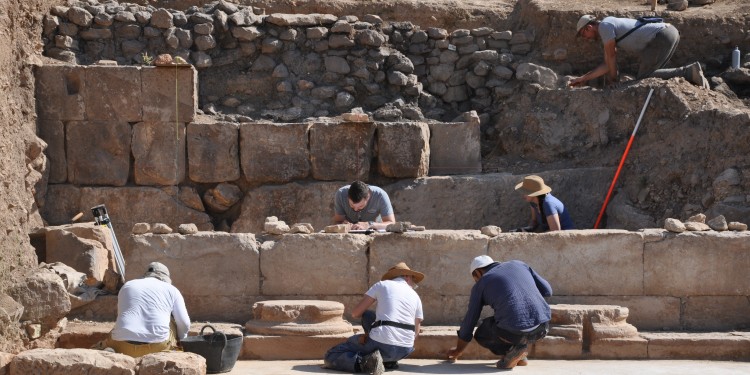
German Research Foundation awards funding to a University of Münster excavation project
For more than 20 years, the staff of the Asia Minor Research Centre at the Department of Ancient History of Münster University has been investigating the cultural legacy of the ancient city of Doliche in south-eastern Turkey. The German Research Foundation (DFG) is now funding the project with around 800,000 euros for a further three years. Under the direction of Prof Engelbert Winter, researchers are investigating fundamental aspects pertaining to the construction and development of the ancient city.
"In ancient times, Doliche was part of Northern Syria and was known as the home of the Iuppiter Dolichenus, one of the most prominent deities in the Roman Empire. From 2001 to 2015 we carried out excavations in the sanctuary of this god, which lies outside the city area. The results of these excavations are of great importance for the religious history of the Near East. Since 2015, however, the ancient city itself has been the focus of a new research project," explains Engelbert Winter. "The aim is to investigate the development of Doliche, the material culture of the city and the living environment of its inhabitants from the Hellenistic-Roman period through Christian late antiquity to the early Islamic epoch". Since the most important sites that could be considered for such investigations are either heavily overbuilt, flooded or no longer accessible due to current political developments in the Middle East, Doliche offers researchers the great opportunity to systematically investigate the transformation of urban life in ancient Northern Syria under changing political, cultural and religious conditions.
The excavations, which have been ongoing since mid-July of this year and involve more than 60 researchers and students from Germany, Turkey, Denmark, Italy and the Netherlands, are currently focusing on the investigation of a monumental Roman bath complex in the centre of the ancient city. They are also investigating a three-nave basilica erected in the second half of the fourth century AD. The church is characterised by its size and magnificent mosaic decoration. The first results of the campaign, which will last until the end of September, show that the building was destroyed by an earthquake in the seventh century.
